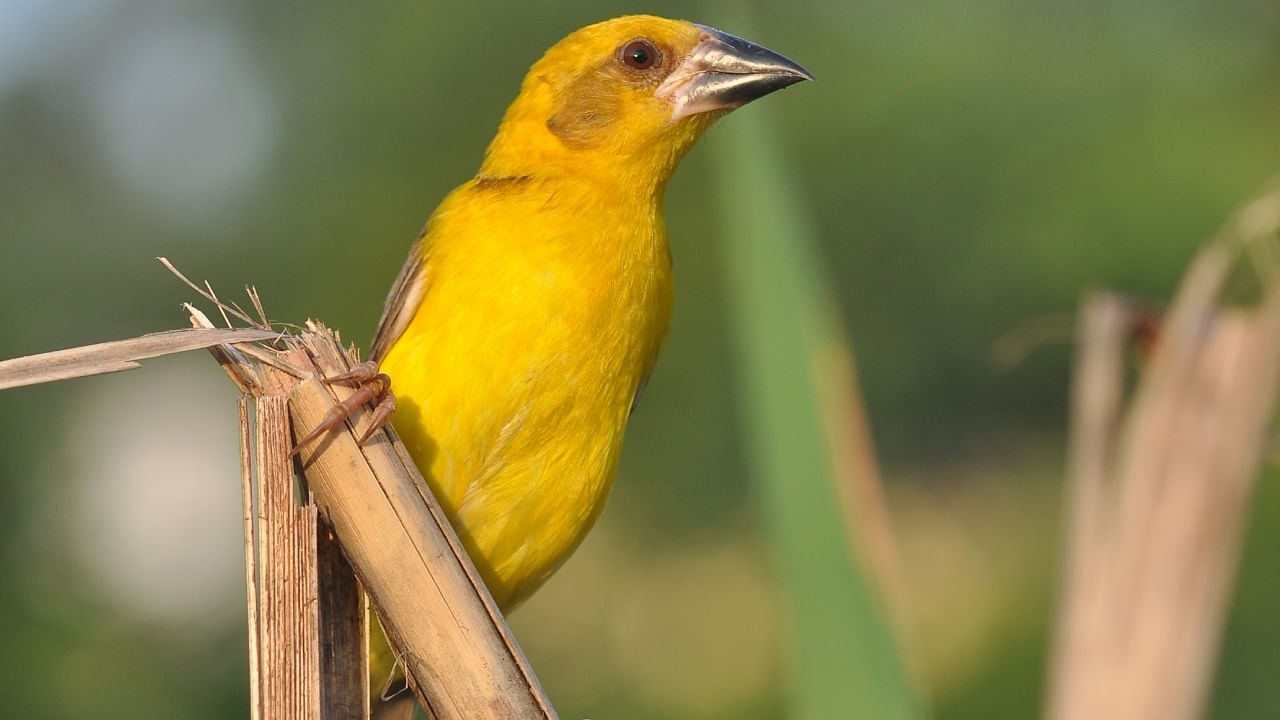
The Finn's Weaver bird - with a global population of less than 1,000 and with an estimate of about 500 adult birds in India is on the brink of extinction. However, efforts are being made to pull it out of the crisis by way of in-situ and ex-situ conservation.
The Mumbai-headquartered Bombay Natural History Society (BNHS) is leading the initiative to save the species.
The Finn’s Weaver has been listed as Endangered by BirdLife International since 2022.
Finn's Weaver (Ploceus megarhynchus), also known as Finn's Baya and Yellow Weaver is found only in India and Nepal, and inhabits the Terai landscape across Uttarakhand, Uttar Pradesh, West Bengal and Assam.
Also Read | BNHS making efforts to save Green Munia
India is home to four species of weaver birds or bayas - Baya Weaver (Common Baya or Indian Weaver), Streaked Weaver, Black-breasted Weaver (Black-throated Weaver) and Finn's Weaver (Finn's Baya or Yellow Weaver).
The Finn's Weaver species was rediscovered in Kumaon Terai in 1959 after two fruitless searches by eminent ornithologist Dr Sálim Ali, the Birdman of India, in 1934 and in 1954.
“The BNHS has estimated a global population of less than 1,000 Finn’s weavers, with an estimate of about 500 adult birds in India. We have launched various initiatives to save the Finn’s Weaver,” said Kishor Rithe, Honorary Secretary and Interim Director, BNHS.
“The low awareness about this species among birdwatchers, policymakers and locals is a challenge when it comes to framing conservation policies to prevent its extinction,” added Rajat Bhargava, Assistant Director and Senior Scientist, BNHS.
“Depending on whether nests or individuals are used as the key metric, there is a decline of 84.1 - 95.8 per cent of Finn’s Weaver population in north India over 15 years. In 2001, BirdLife International mentions 17 locations of Finn’s Weaver in India based on records from 1866–2000. BNHS’ study of this species up to 2017 has notched up the site number to 47. The survey results over the last five visits between 2012–2017 reveal that the Finn’s Weaver is now present in only nine of the 47 locations,” said Dr Bhargava.
Of the nine locations where it is currently sighted, three are new locations identified during the one-year BNHS survey carried out in 2016–2017. The three locations, identified based on information provided by former bird trappers, include Harewali Dam and Bhagwanpur Raini in Uttar Pradesh.
Finn’s Weaver inhabits the pure Terai area with marshes and strands of tall wet grasses sparsely dotted with isolated trees (especially Bombax ceiba used for nesting) and occasionally interspersed with patches of rice and sugarcane fields.
“Unlike the three Indian weaver species that normally have suspended nests slung from branches or fine twigs, the nests of Finn’s Weaver are large globular structures, untidily but firmly woven with an entrance on one side near the top. The study shows that nest predation by crows is a major reason for the species decline, combined with the decline of its microhabitat,” he added.
The BNHS is trying to attempt conservation breeding in Hastinapur Wildlife Sanctuary in Uttar Pradesh in close collaboration with Uttar Pradesh Forest Department and awaiting clearance from Central Zoo Authority. To start with one such breeding program, a founder population of 12 to 16 birds would be more than enough.